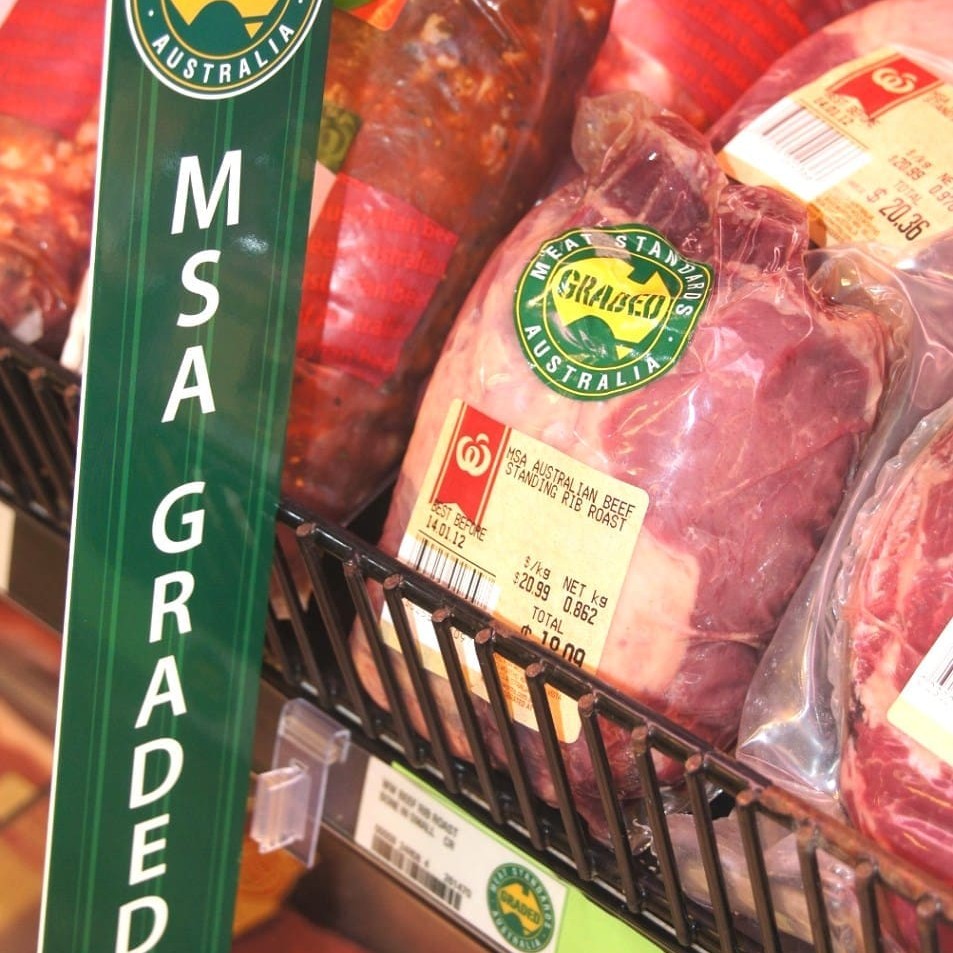 With Meat Standards Australia grading numbers last financial year hitting 2.4 million head across the nation, is there a risk at some point that the program will hit saturation level?
With Meat Standards Australia grading numbers last financial year hitting 2.4 million head across the nation, is there a risk at some point that the program will hit saturation level?
Meat & Livestock Australia managing director, Scott Hansen, who chairs the industry’s MSA taskforce, said continued strong growth in MSA at a national level (see this morning's other report) was being driven by domestic demand from beef brand program managers – both processor and retail – wanting to underpin their offering with an eating quality claim.
“What we’ve also seen, and which is clearly evident in results this year, is the rapid growth in grading numbers in southern Australia, and Victoria in particular,” Mr Hansen said.
“There are probably three factors in play: pull through from major supermarket retailers, greater penetration and demand for company brands, and expanding procurement of cattle from interstate (more northern) areas.”
While ‘saturation point’ for MSA in terms of its uptake in Australia was possible, he thought the industry was still ‘some considerable way’ from that yet.
“The next big growth will come as brand managers start to look to utilise MSA’s eating quality guarantees to underpin their export offerings,” he said.
Other recent MSA developments – such as the recent inclusion of long distance transport capability into the MSA pathway model (see Beef Central’s earlier report here) would also help extend the catchment for MSA cattle supply.
“Greater supply opportunity, coupled with the potential to take MSA-backed brands into international markets means there is plenty of scope for growth yet. That’s where we see the next growth in numbers being driven from,” he said.
There are also some well-advanced proposals for further refinement of the MSA model, including MSA optimisation and the MSA index, which would assist this process.
“Perhaps more than growth, these tools will potentially drive MSA producers’ ability to really manage towards an eating quality outcome, giving them a greater range of tools and information on which they can base MSA management decisions,” Mr Hansen said.
While it remains fairly seasonal, muscle cuts other than the four main grilling cuts are also being seen in the domestic retail environment, in greater volume carrying an MSA identity, including chucks and blades in winter.
Some butchers in recent months have complained to Beef Central that they are unable to keep up with the demand for MSA diced meat for slow cooking. A prominent Sydney butchery outlet located in a CBD railway station shopping complex recently had MSA diced chuck steak retailing for $17.99/kg.
Another driver of supply would continue to be premiums for MSA cattle in the marketplace. MSA cattle prices have been conspicuously robust during the past six months, when many cattle descriptions came under considerable price pressure due to drought turnoff.
“The strength of the growth and demand for MSA has been from processor and retailer brands that have wanted to make sure that they maintain a supply of product that they can guarantee, from an eating standpoint, despite the dry conditions across large parts of Eastern Australia,” Mr Hansen said.
“Price premiums are part of the process to ensure that that supply continues.”
Growth in producer registrations
In other statistics gathered from the 2012-13 financial year MSA performance data, total beef and sheepmeat producers now accredited for MSA supply has reached 30,413, a 28pc rise on year-earlier figures.
Producer numbers rose by almost 7000, (up from a rise of 4200 a year earlier) however MLA was unable to provide a break-up between sheepmeat and beef suppliers. Some are accredited for both.
NSW had the greatest number of MSA-accredited producers by 30 June at 9433, followed by Qld (5111), WA (4870), Victoria (4766, up from 3025 a year earlier), Tasmania (3379) and SA (2806).
There are now more than 2100 licensed end-users for MSA, covering retail, supermarket, food service (hotels, restaurants, pubs, clubs, cafes), and wholesalers. Significantly, while it accounts for more than 870 stores nationwide alone, Woolworths is counted only as a single entity in this tally. There were 199 licenses current in the supermarket category, covering 1094 outlets. Independent butcher numbers rose to 629.
Licensed beef processor numbers rose last financial year by two to 41, located in all Australian states. New license holders (although they may not be actively grading for MSA) are Hardwick’s (beef and lamb, at Kyneton in Central Victoria), and Kilcoy Pastoral Co (beef only, in southeast Queensland).
- Tomorrow: Beef Central scrutinises national MSA grading compliance for the 2012-13 year just completed, and some of the reasons behind the results.
